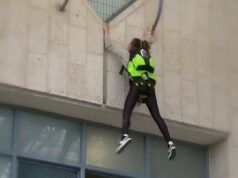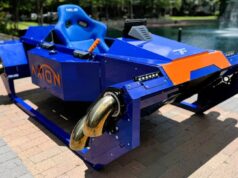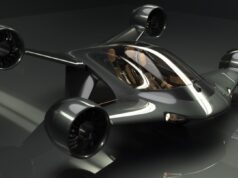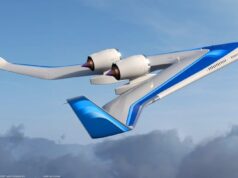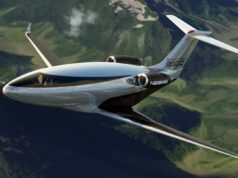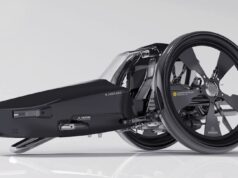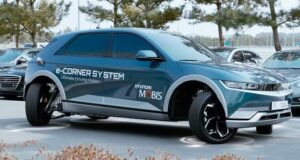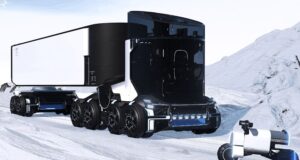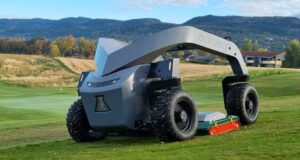The Fly Citycopter by Brazilian visual artist designer Eduardo Galvani is a two passenger eVTOL multicopter concept which is a fusion of art, retrofuturistic steampunk styling and modern technological innovations. Electricity powered and sun rechargeable, Fly is very efficient, economic and cheaper than a conventional helicopter. It is also easier to control, more silent and less vibrant.
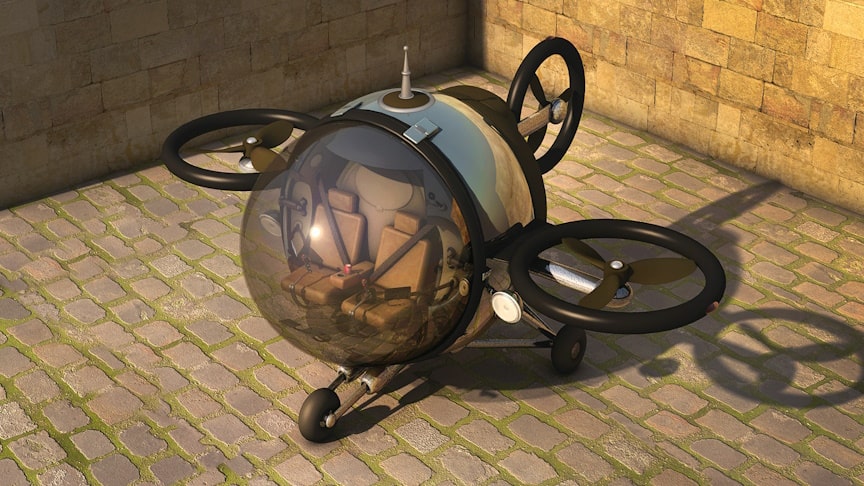
source-image: Eduardo Galvani
The aircraft holds one pilot, one passenger and luggage. The aircraft has a bubble window allowing excellent front, left, right, bottom and top views from the cockpit. Fly is also equipped with last technology system for aerial navigation, allowing auto take-off, auto pilot, auto landing, flight planning and can be easy remotely controlled in short distances with safe obstacle detection.
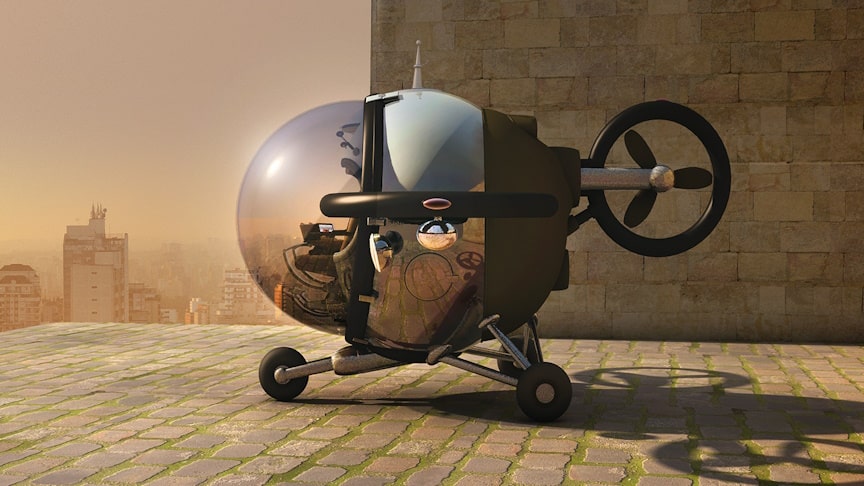
source-image: Eduardo Galvani
It’s rotors are automatically directed by an accelerometer system for a better flight stabilization. Fly has cyclic joysticks with 6 configurable buttons each one. Is the first electric helicopter concept with touch screen digital panels with Flight Management System (FMS) and all the necessary Flight Instruments, as Altimeter, Attitude indicator, Airspeed indicator, Compass, Heading indicator, Vertical speed indicator, Course Deviation Indicator, Radio Magnetic Indicator and more.
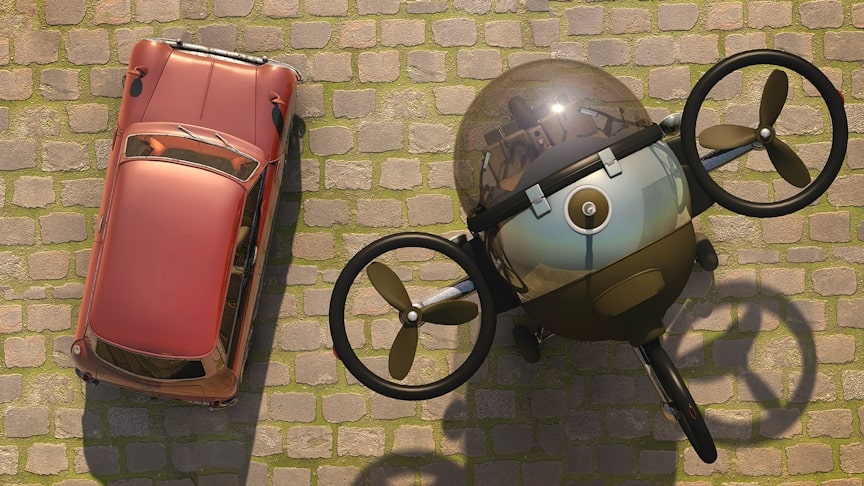
source-image: Eduardo Galvani
The Fly Citycopter is powered by 3 electric motors with power source of batteries. It takes 6 hours to recharge the batteries and batteries are swappable. The Dimensions are 6.34 x 5.20 x 5.49 m.
Advertisement
The maximum speed of the aircraft is estimated to be 193 km/h, it has a range of 482 km and an approximate flight time of two and half hours and has a maximum altitude of 3,657 meters. The aircraft has fixed tricycle wheeled landing gear. The aircraft has been designed to fly in congested city environments and also be an eco-friendly form of transportation which makes it an ideal aircraft for the future of advanced air mobility.
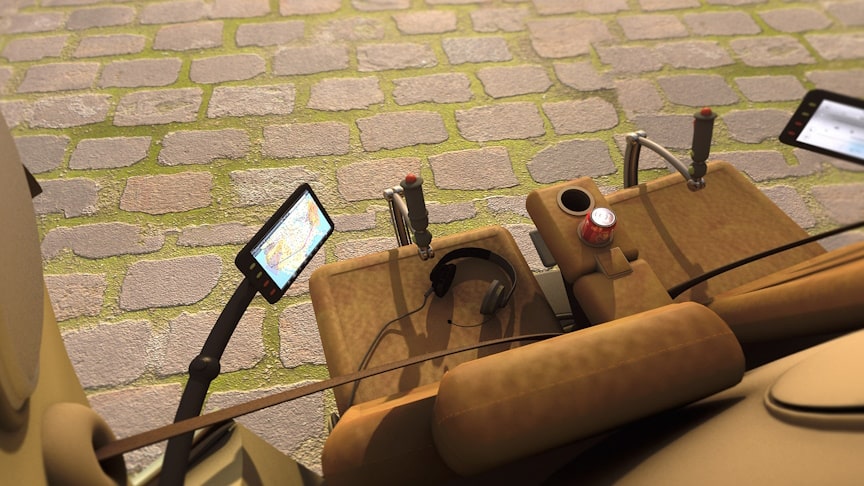
source-image: Eduardo Galvani
Fly™ is really yet much more just a visual representation of an ideal for the future of aerial transportation, but it reflects some social and ecological principles which everyone would be awaked to face the next challenges of the XXI century with confidence and hope to be collaborating with a better world for all.
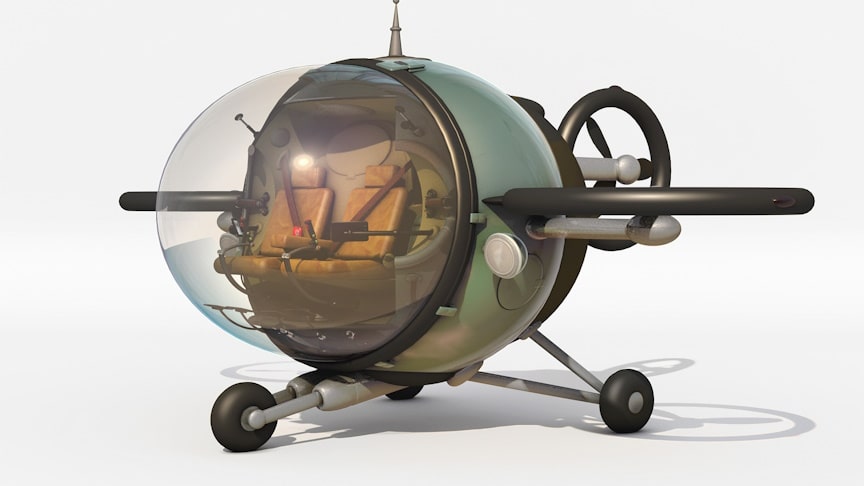
source-image: Eduardo Galvani
For now, maybe the best goal of the concept is just to inspire creative people from the industry of transportation about another possible ways to make a new reality comes true as soon as we can imagine, to show that these possibilities are already in our hands, and that sometimes we just need a break to rethink what way is better to go next.

